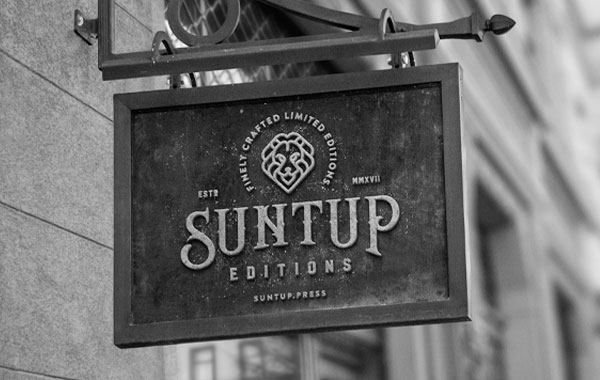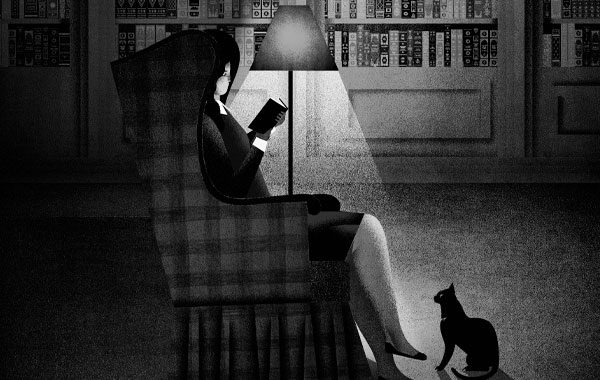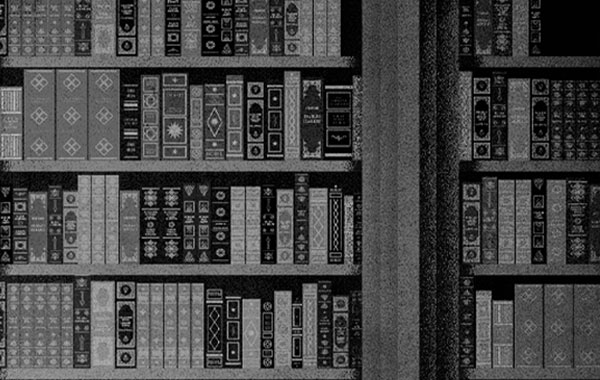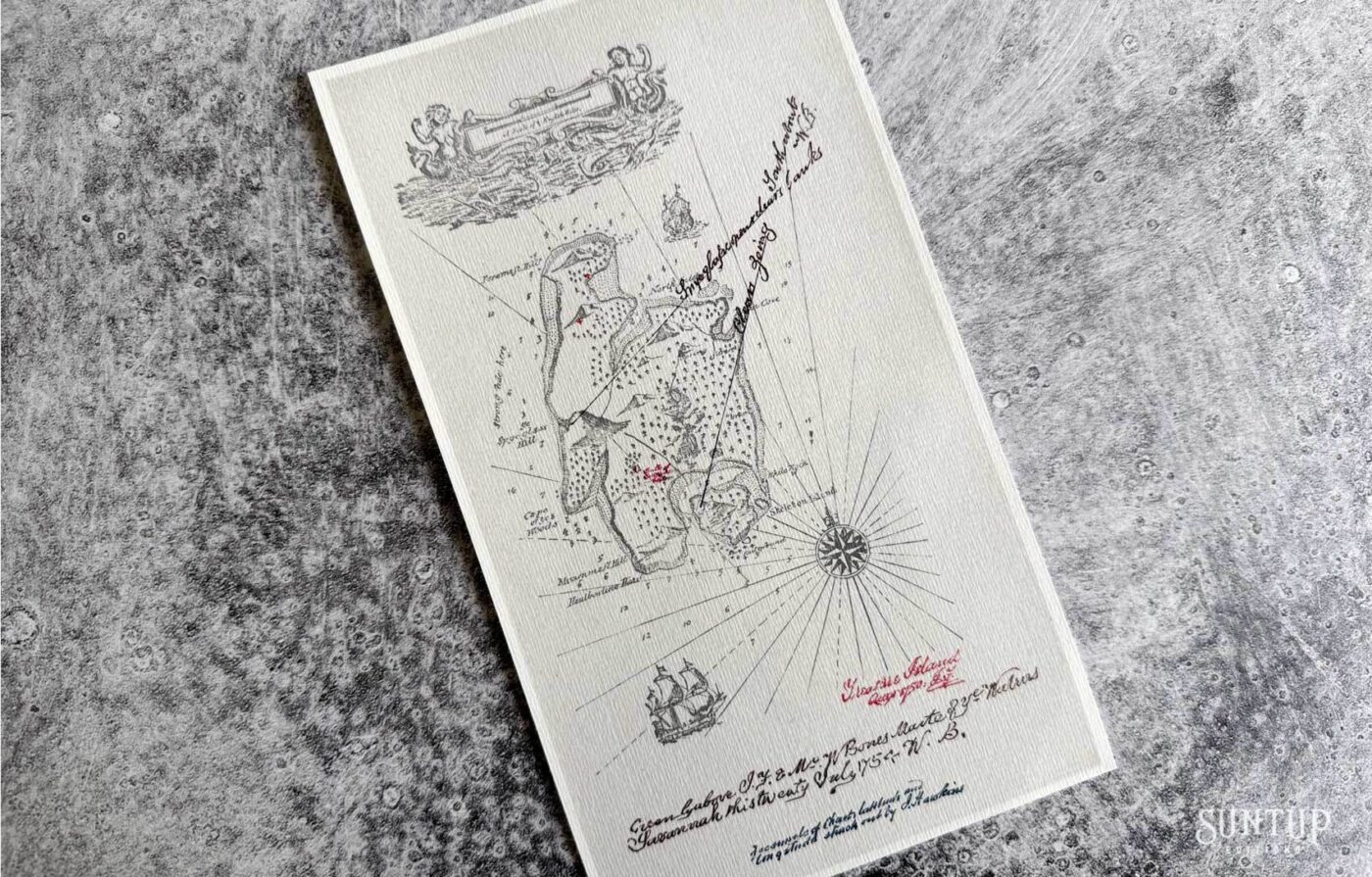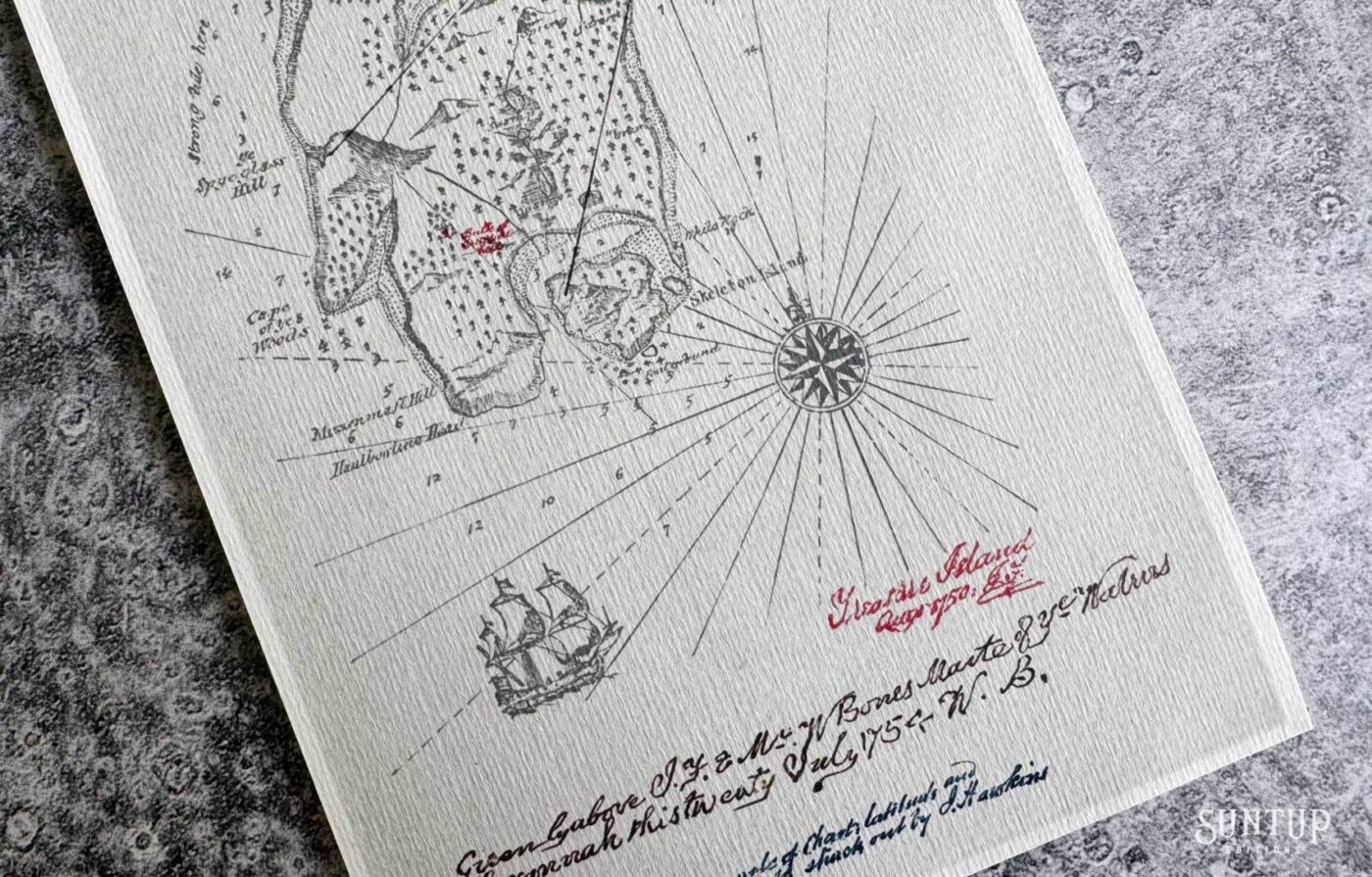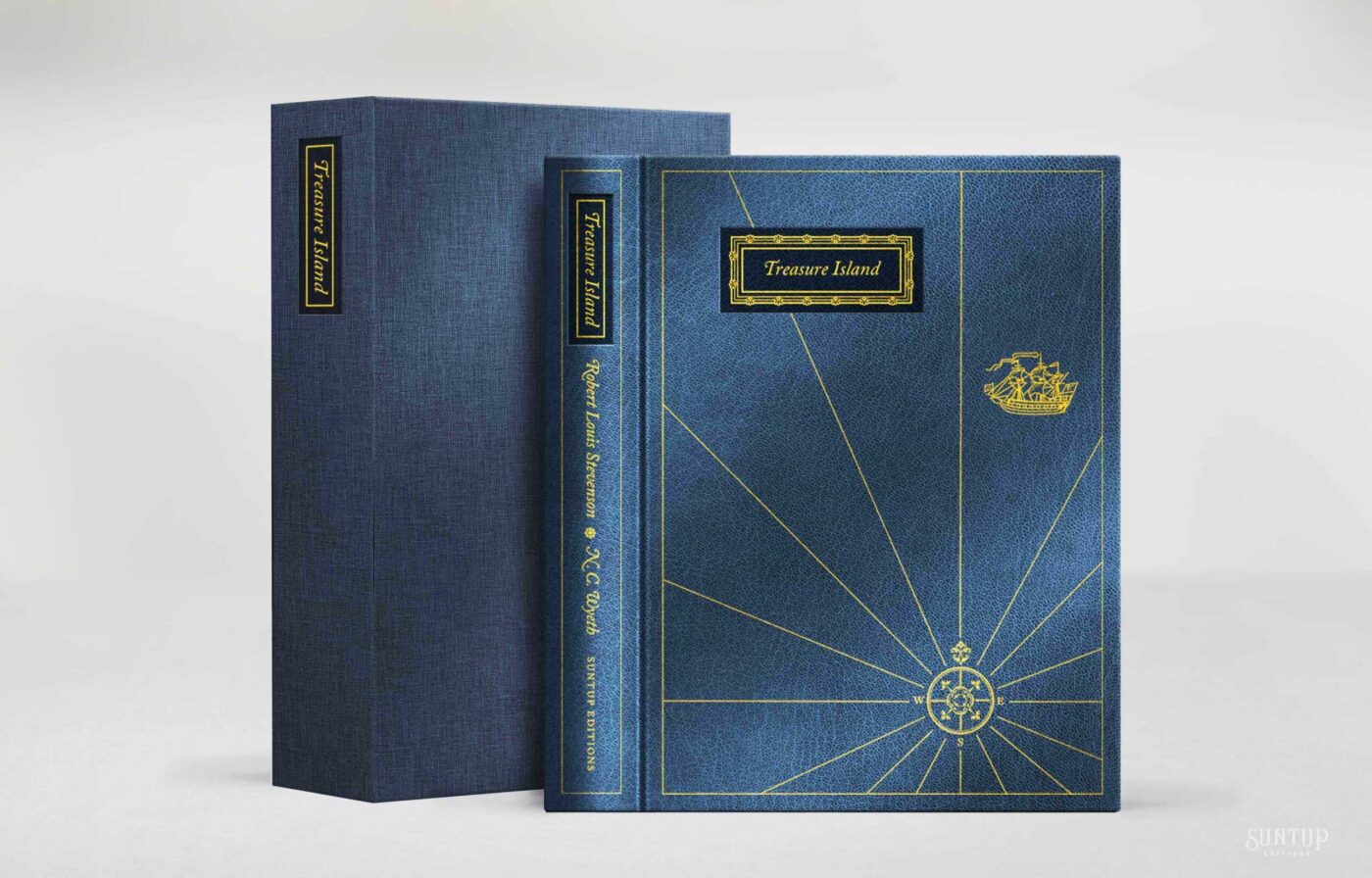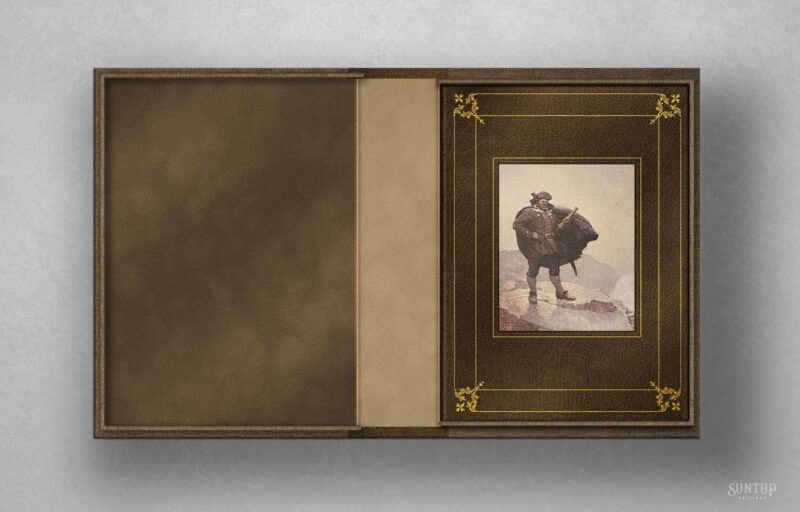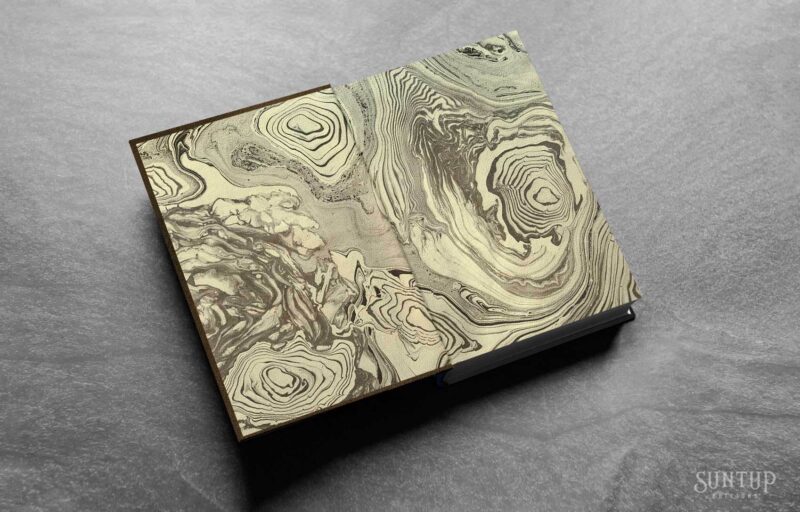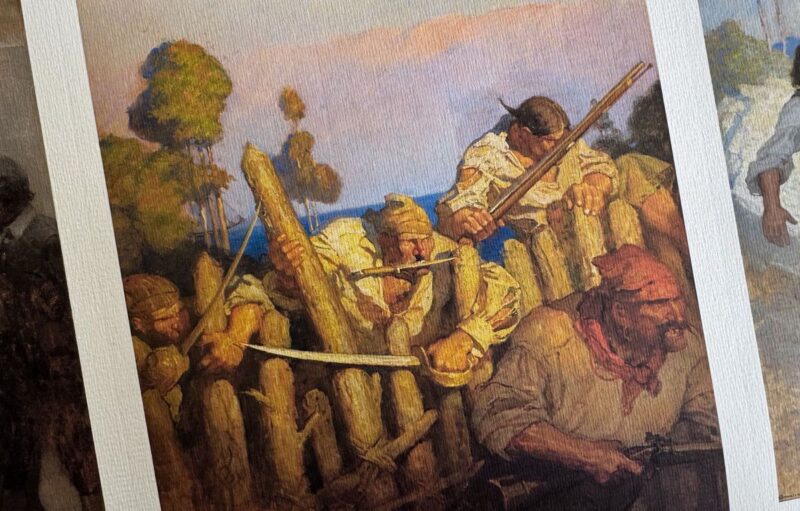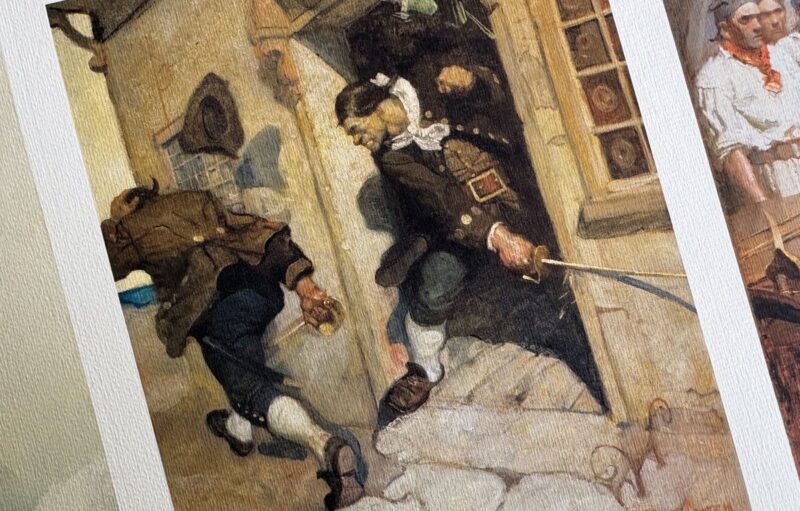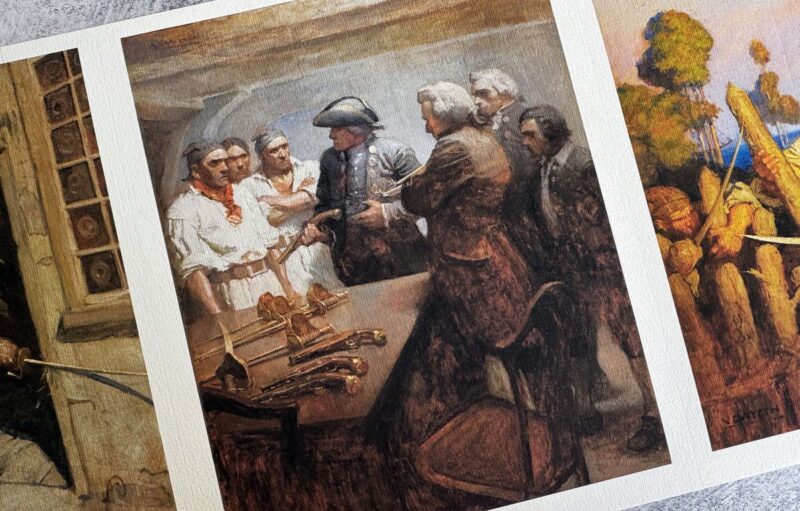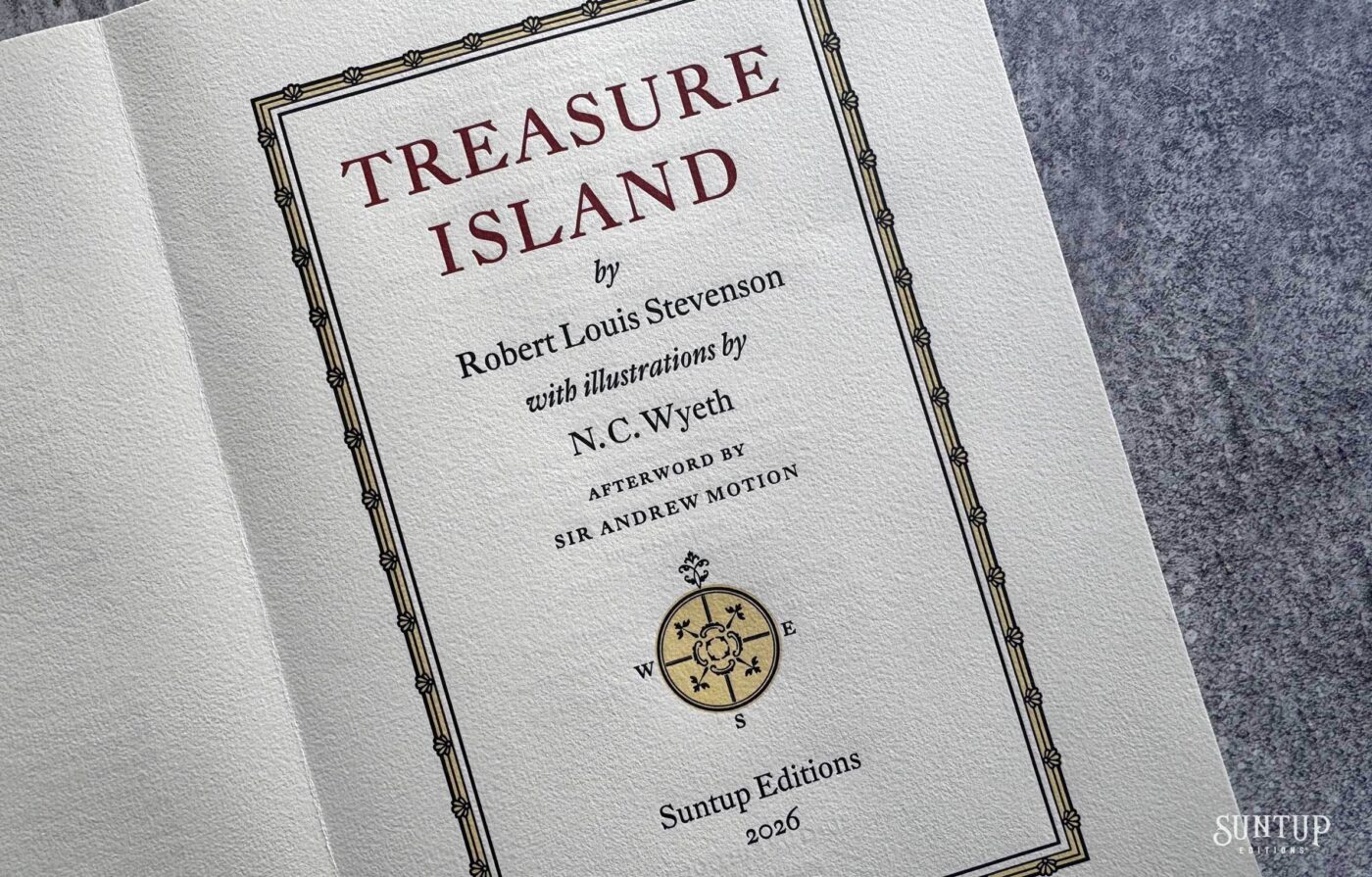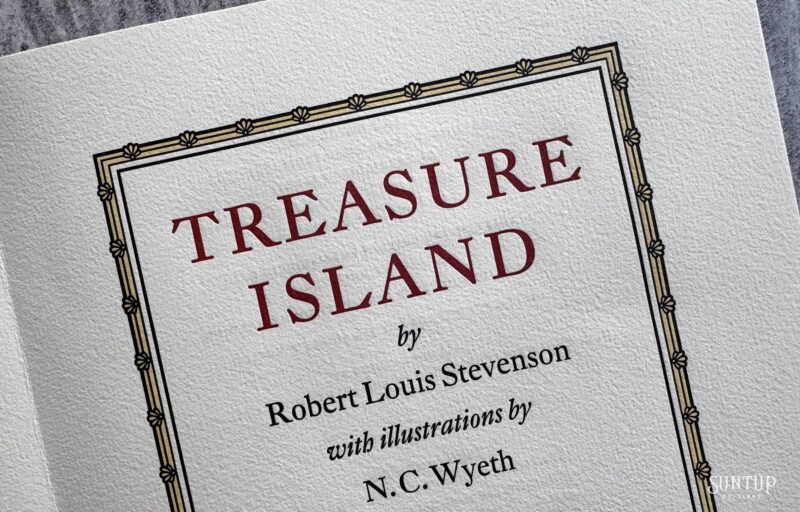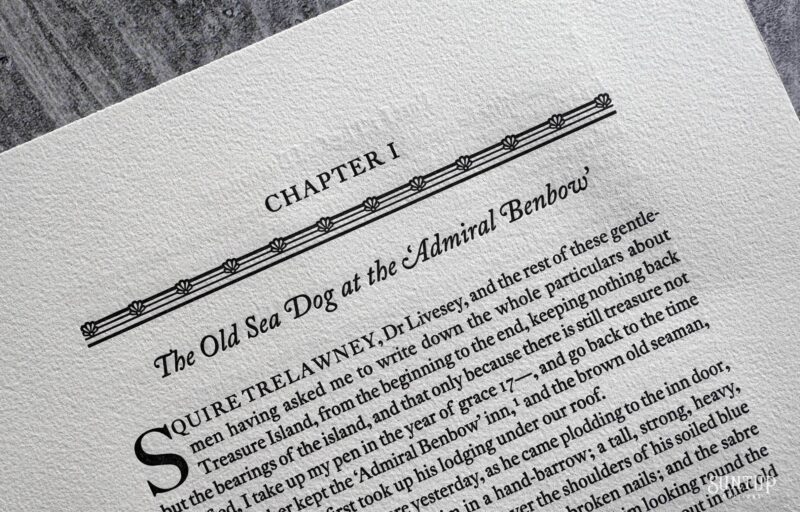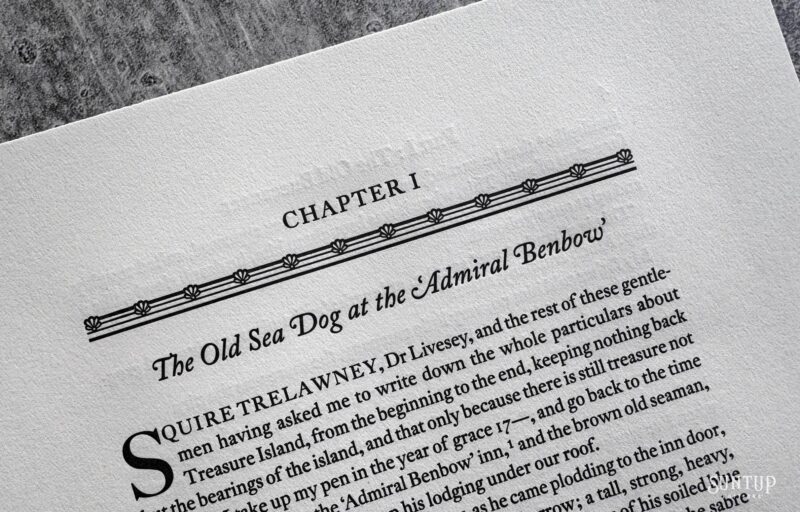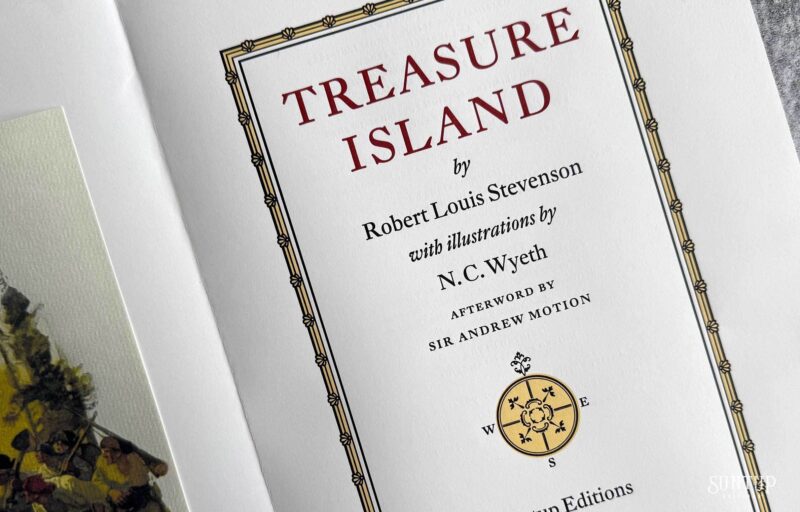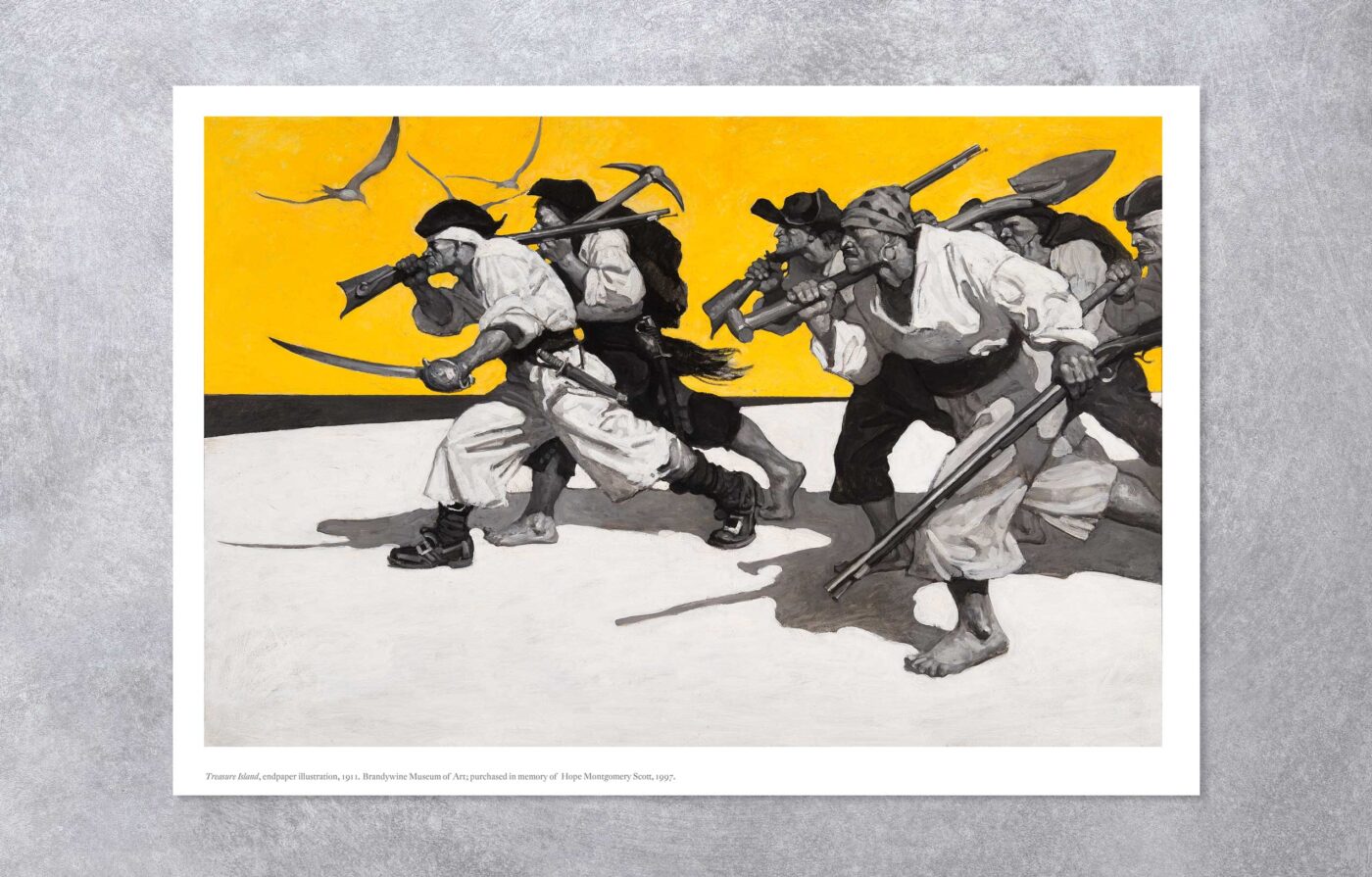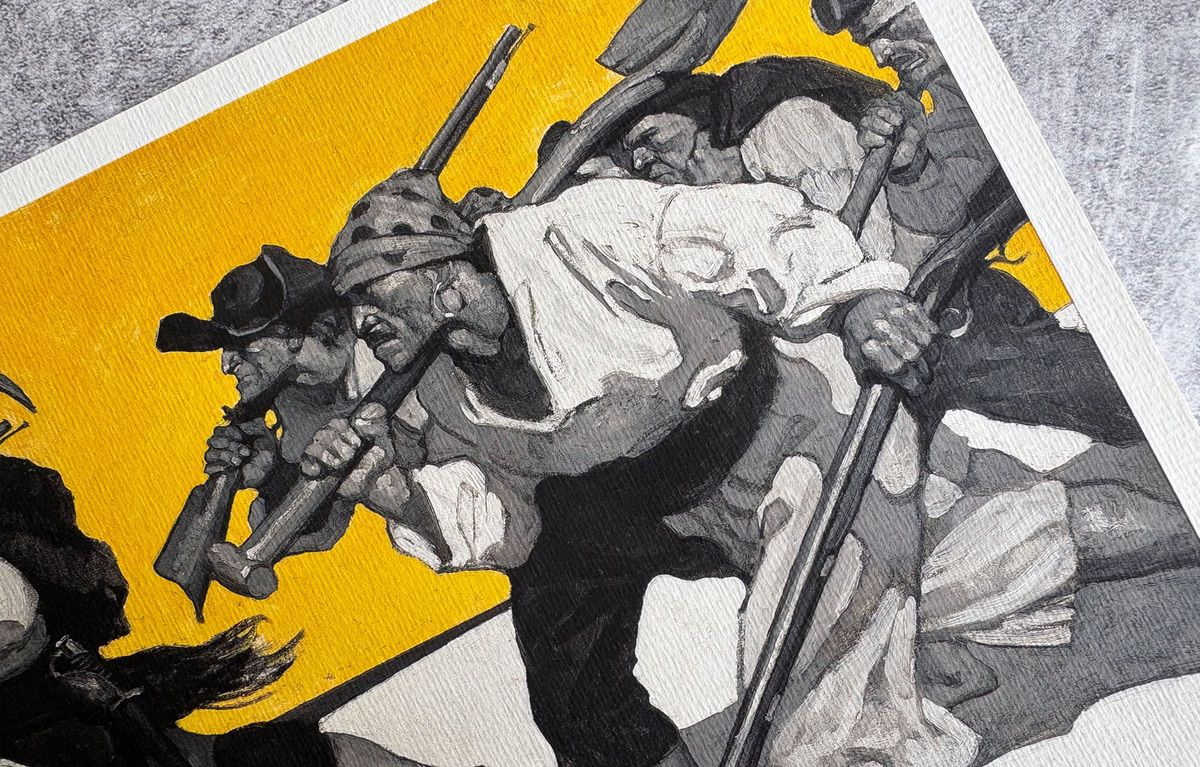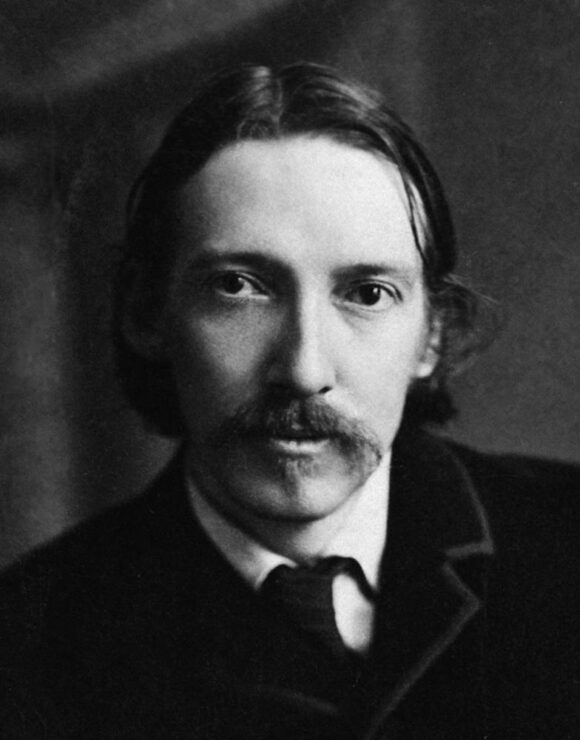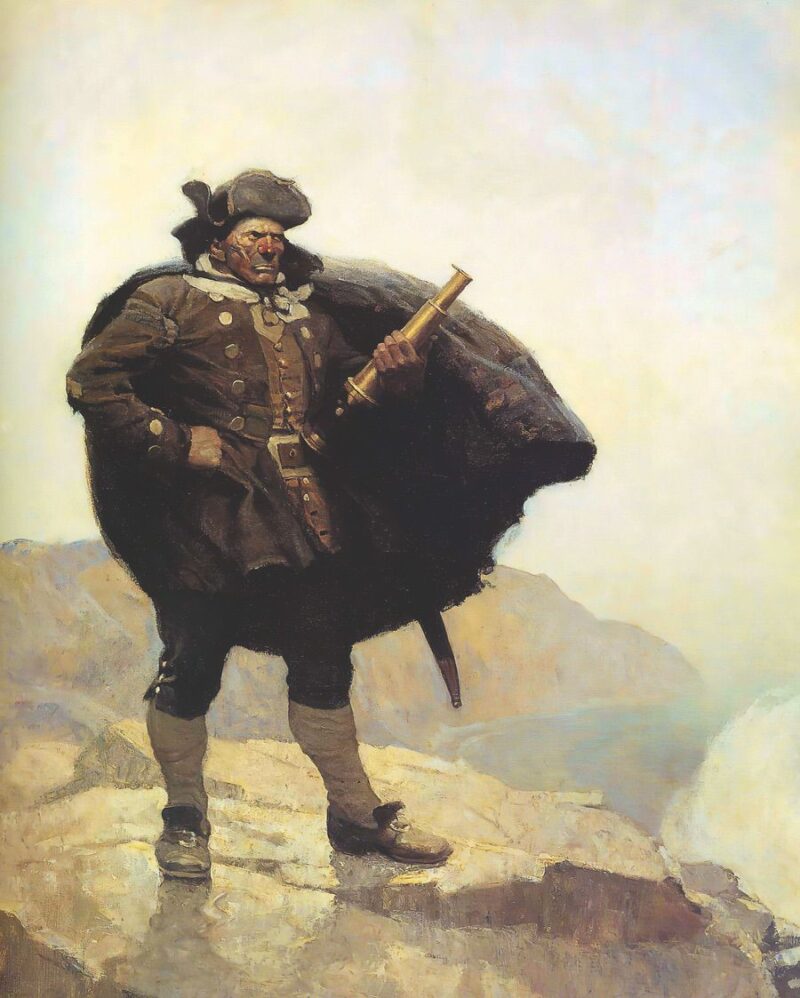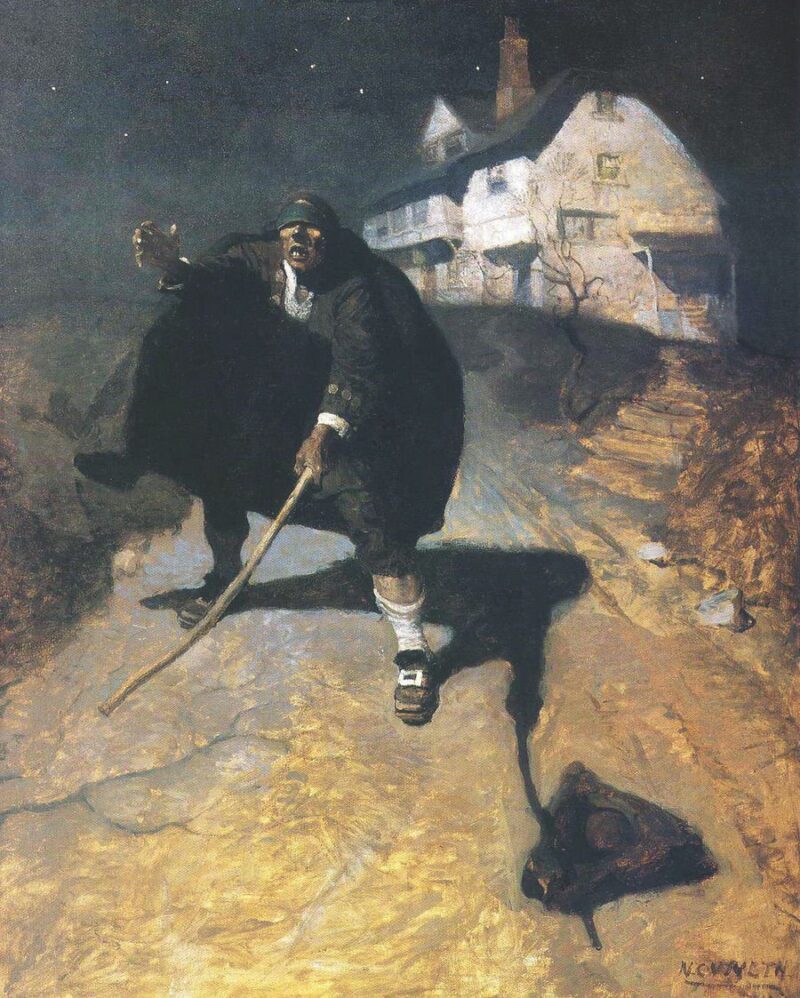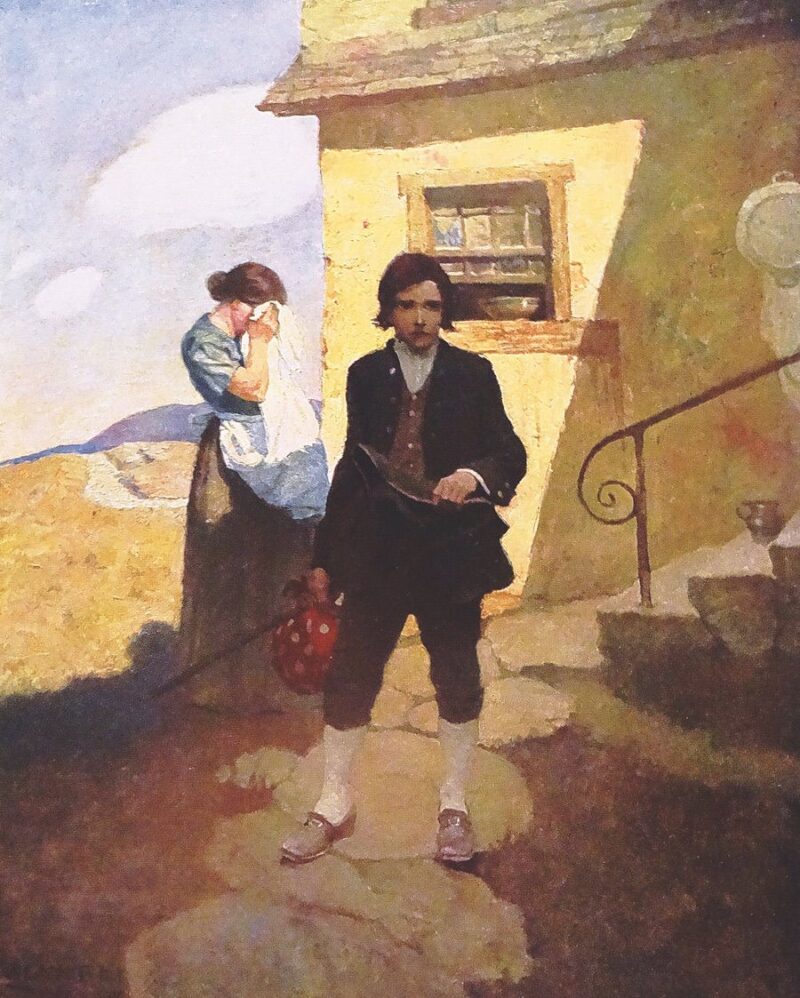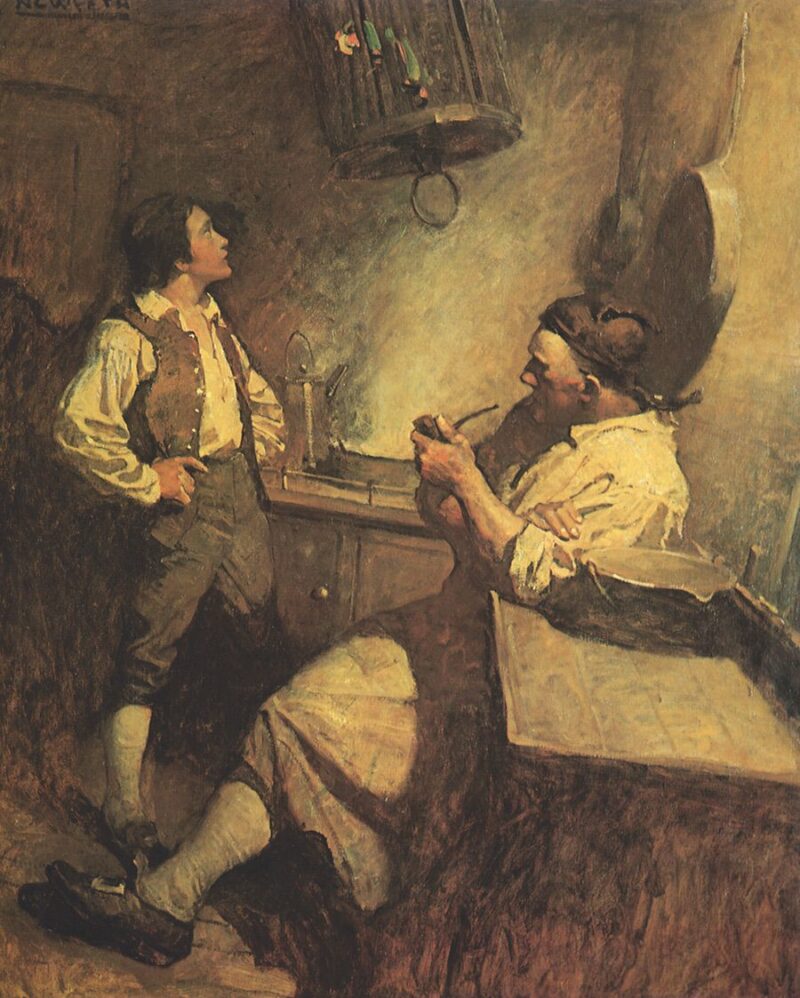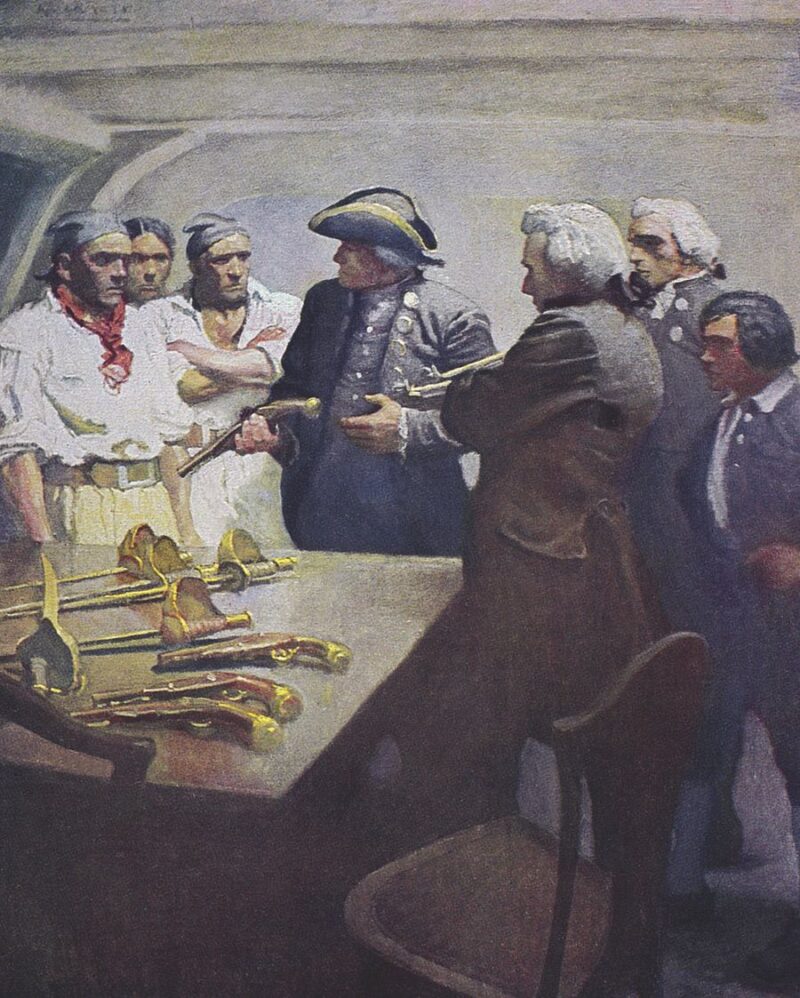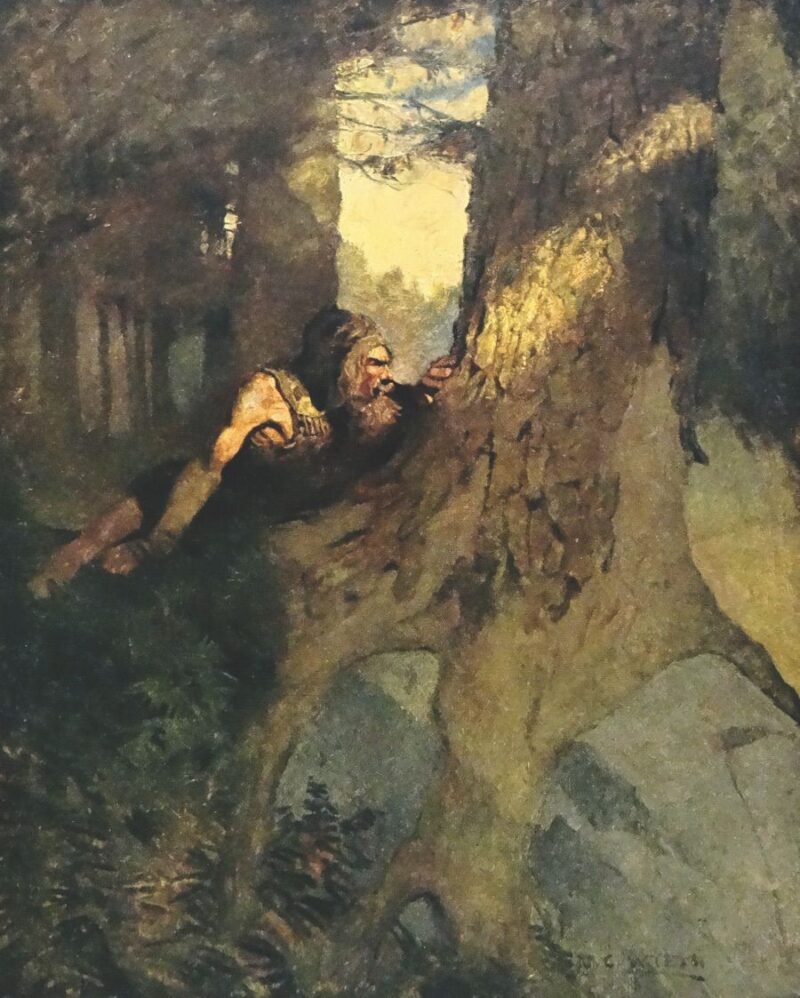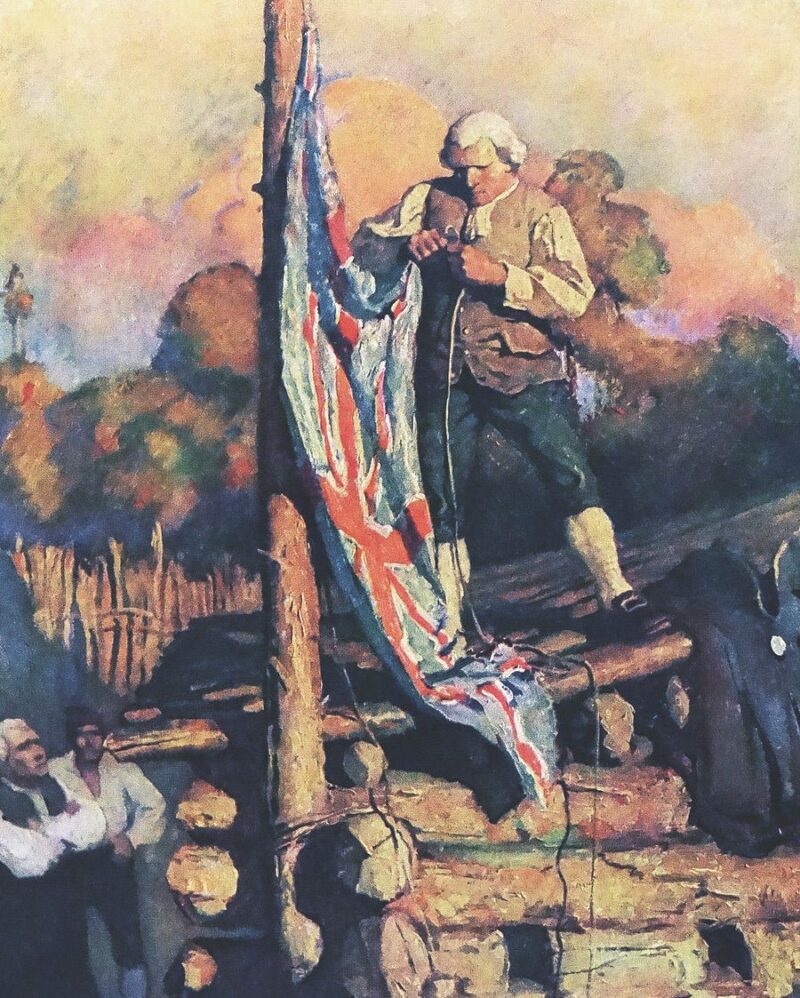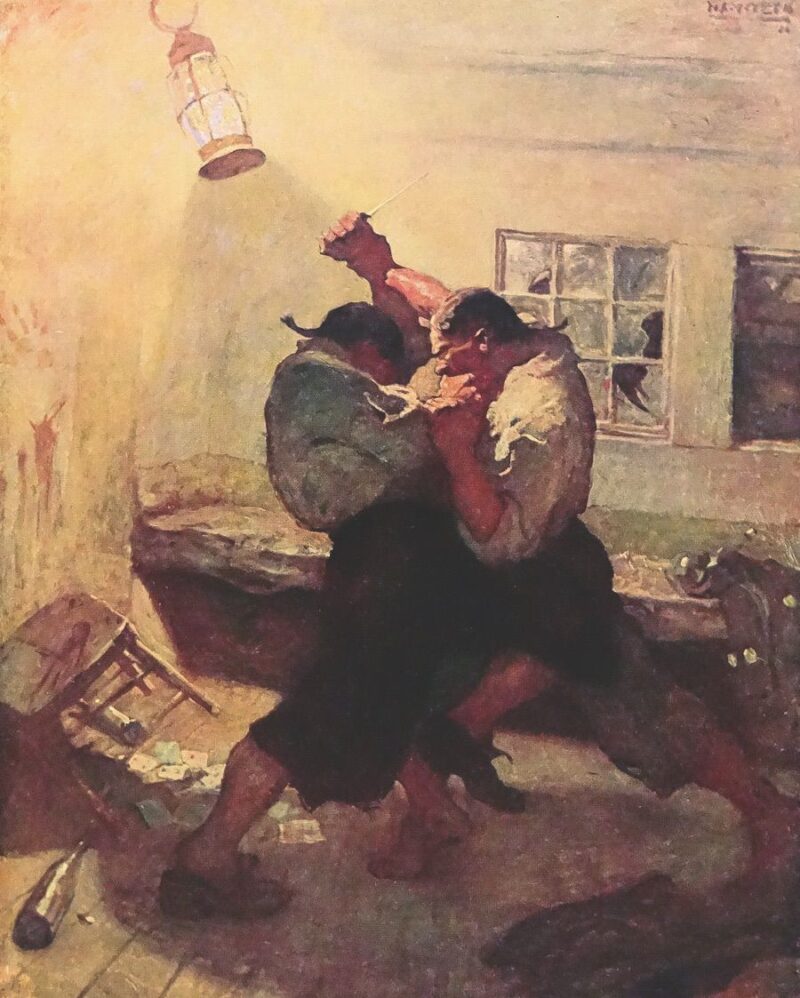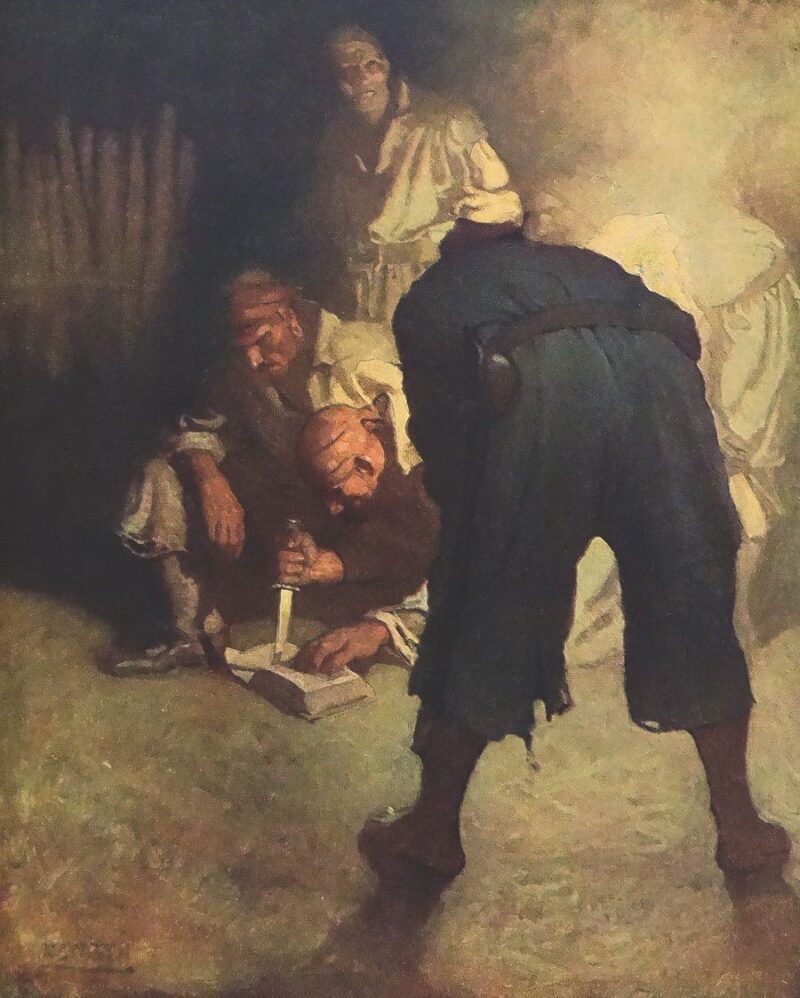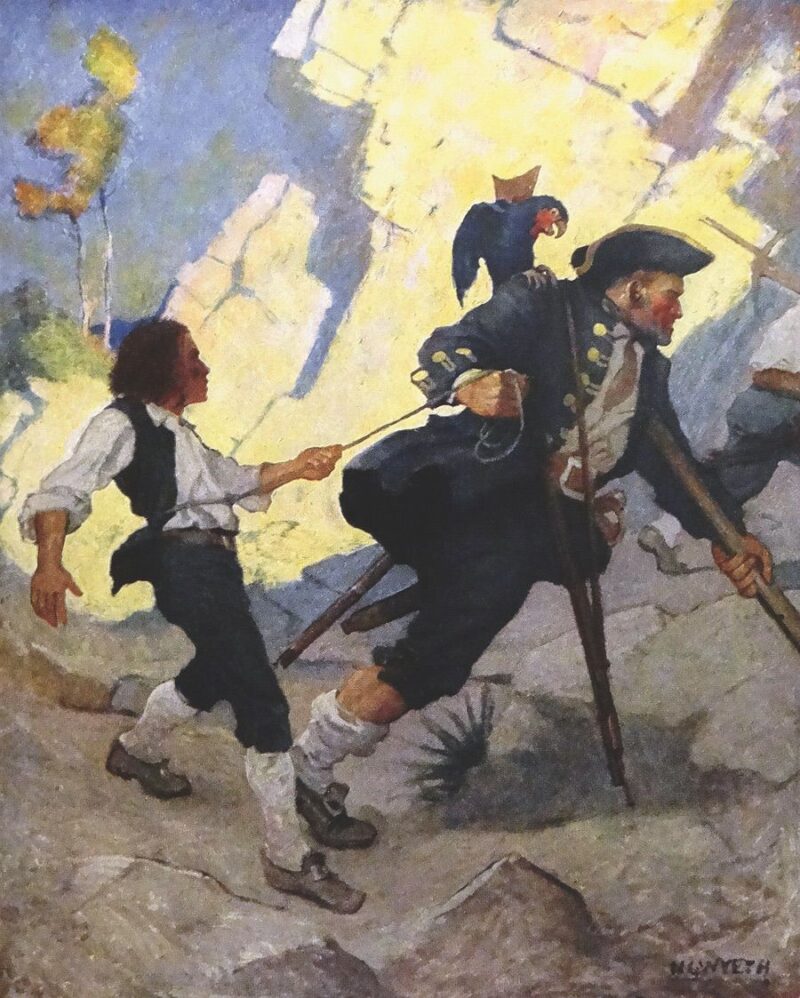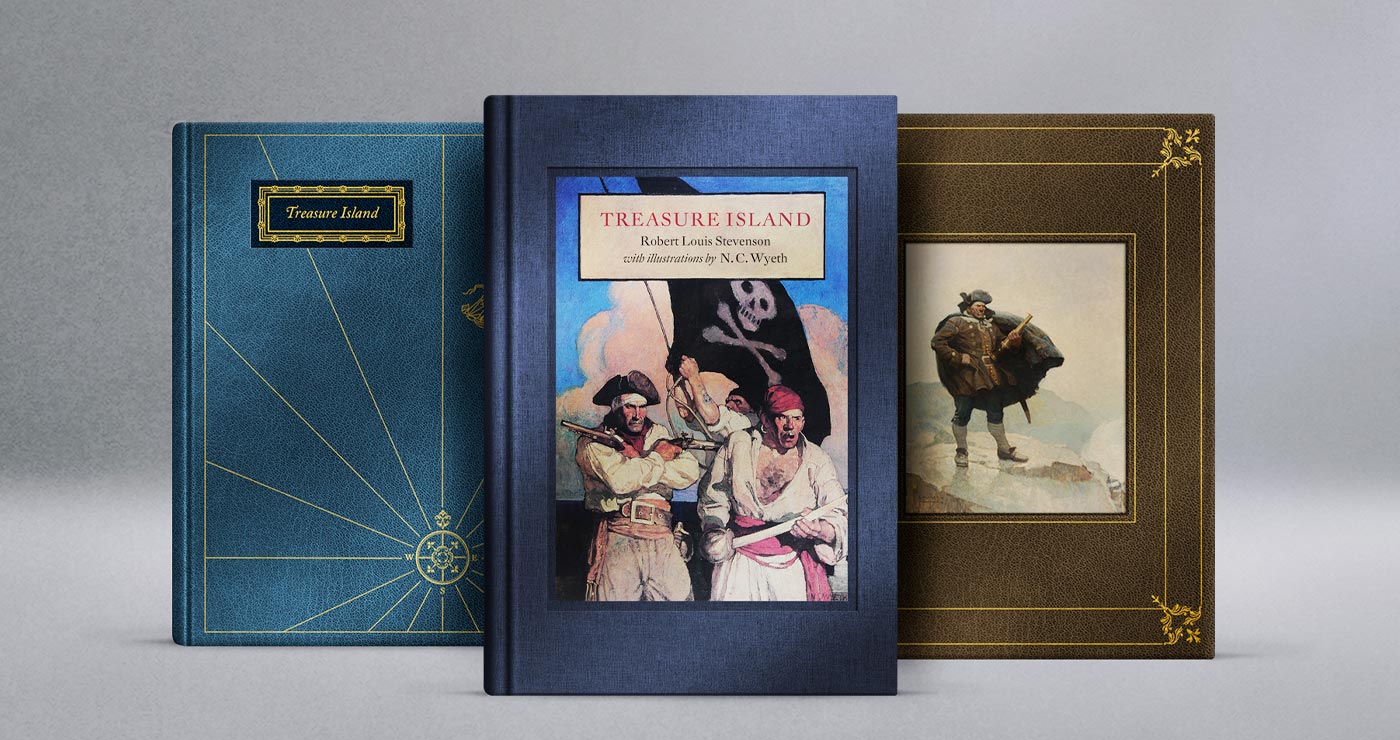
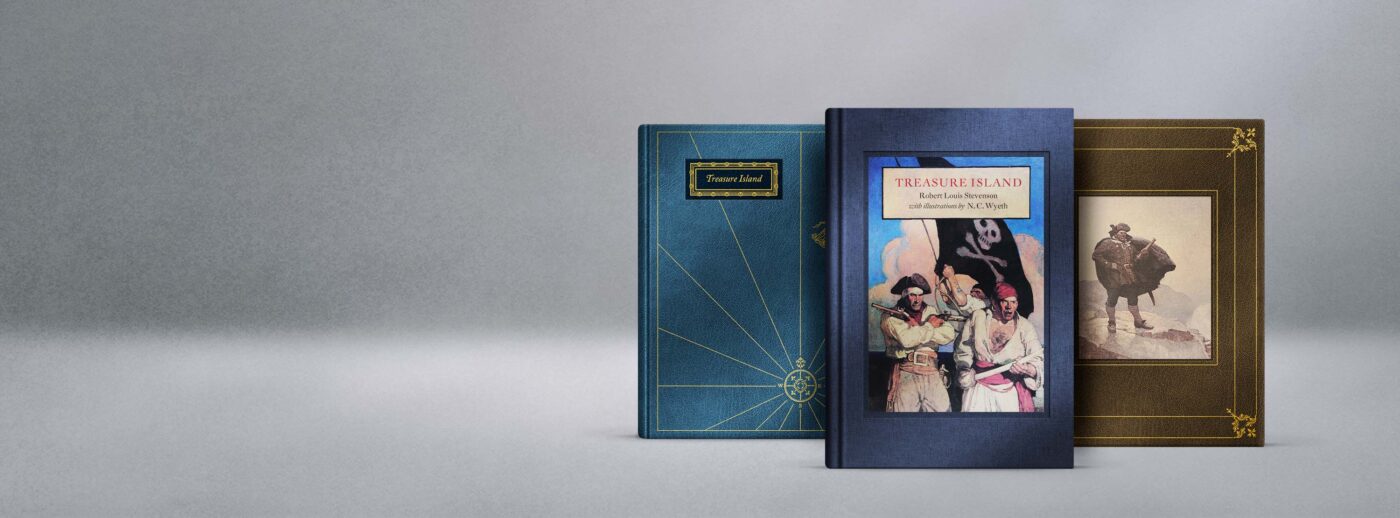
Treasure Island Robert Louis Stevenson
Illustrations by N.C. Wyeth
Afterword by Sir Andrew Motion
With its gripping tale of pirates, buried treasure, and daring heroics, Robert Louis Stevenson’s Treasure Island has captivated generations, standing as one of the most beloved coming-of-age adventures ever written. For over a century, its timeless storytelling has enchanted readers and ignited imaginations across the world.
Before being published as a novel in 1883, Treasure Island was serialized in the magazine Young Folks from 1881 to 1882 under the title Treasure Island or the Mutiny of the Hispaniola and credited to the pseudonym “Captain George North”. The tale follows young Jim Hawkins, whose discovery of a cryptic treasure map propels him on a dangerous voyage to a distant island, alongside unforgettable characters like Long John Silver—a one-legged, morally ambiguous seaman as cunning as he is charismatic.
Hailed upon its release for its spellbinding storytelling and richly drawn characters, Treasure Island became an instant classic, delighting readers of all ages including Stevenson’s contemporaries of the time. J.M. Barrie, author of Peter Pan, once wrote, “Over Treasure Island I let my fire die in winter without knowing that I was freezing.” With its enduring archetypes of pirate lore: deserted tropical islands, treasure maps where “X” marks the spot, mutinies on the high seas, and seafarers with parrots perched on their shoulders, Stevenson’s imagination created the blueprint for high seas and high stakes adventure novels.
In 1911, N.C. Wyeth’s extraordinary illustrations for Treasure Island further cemented its place in literary and artistic history, bringing Stevenson’s vivid world to life with unparalleled drama and beauty.
A work of imaginative wonder, Treasure Island remains a cornerstone of literature. Its themes of courage, loyalty, and the perilous allure of greed are as resonant today as they were over a century ago. Perhaps more important than its influence on storytelling and culture is the simple fact that it continues to entrance readers, inviting us on a timeless quest—a journey into the unknown, where treasure is both literal and metaphorical, and where each turn of the page feels effortless, bringing with it new revelations.
About The Edition
Our edition of Treasure Island by Robert Louis Stevenson is presented in three states: Artist, Numbered & Lettered. The oversized edition measures 7¾” x 11¼” and features all seventeen illustrations by N.C. Wyeth which were commissioned by Charles Scribner’s Sons for their 1911 illustrated edition of the novel. Wyeth’s vibrant oil paintings are widely regarded as some of the most iconic depictions of the novel, shaping the popular imagination of characters like Long John Silver and Jim Hawkins for generations.
Wyeth’s now famous and beloved paintings are reproduced as fine art giclée prints, tipped-on across all states. This marks the first time these illustrations will appear in this format alongside the text. They are created from photographs of the original paintings which have been professionally captured using museum-grade reproduction techniques. This ensures the finest level of detail, color accuracy, and tonal depth, offering readers an unparalleled visual experience that closely mirrors Wyeth’s original masterpieces.
We have worked closely with the Brandywine Museum of Art, the New York Public Library Rare Book Division and the New Britain Museum of American Art to license the best quality source material available.
In addition, the cover painting to the Scribner’s edition, long held in a private collection has been professionally photographed exclusively for this edition. The sole exception is the painting tragically lost to fire in 1952, which has been reproduced from the best archival materials available.
The edition includes the Robert Louis Stevenson essay, “My First Book: Treasure Island”, an afterword by Sir Andrew Motion, as well as a note on the text by Timothy Harding who edited the work. Also included is a giclée reproduction of the recreated treasure map—originally hand-drawn by Robert Louis Stevenson which first charted the legendary island’s hidden riches and inspired the timeless adventure.
The text is that of the 1883 Cassell edition, which reflects the author’s final intentions, and our edition includes extensive footnotes. Beautifully and expertly designed by award-winning designer Mark Argetsinger, the text is set in DTL Fleischman and the edition is printed letterpress in folio format by Elias Roustom on his Heidelberg Cylinder in Middleborough, Massachusetts on Cougar Natural, Neenah Cotton and mouldmade Hahnemühle Biblio papers.
The Map that Inspired Treasure Island
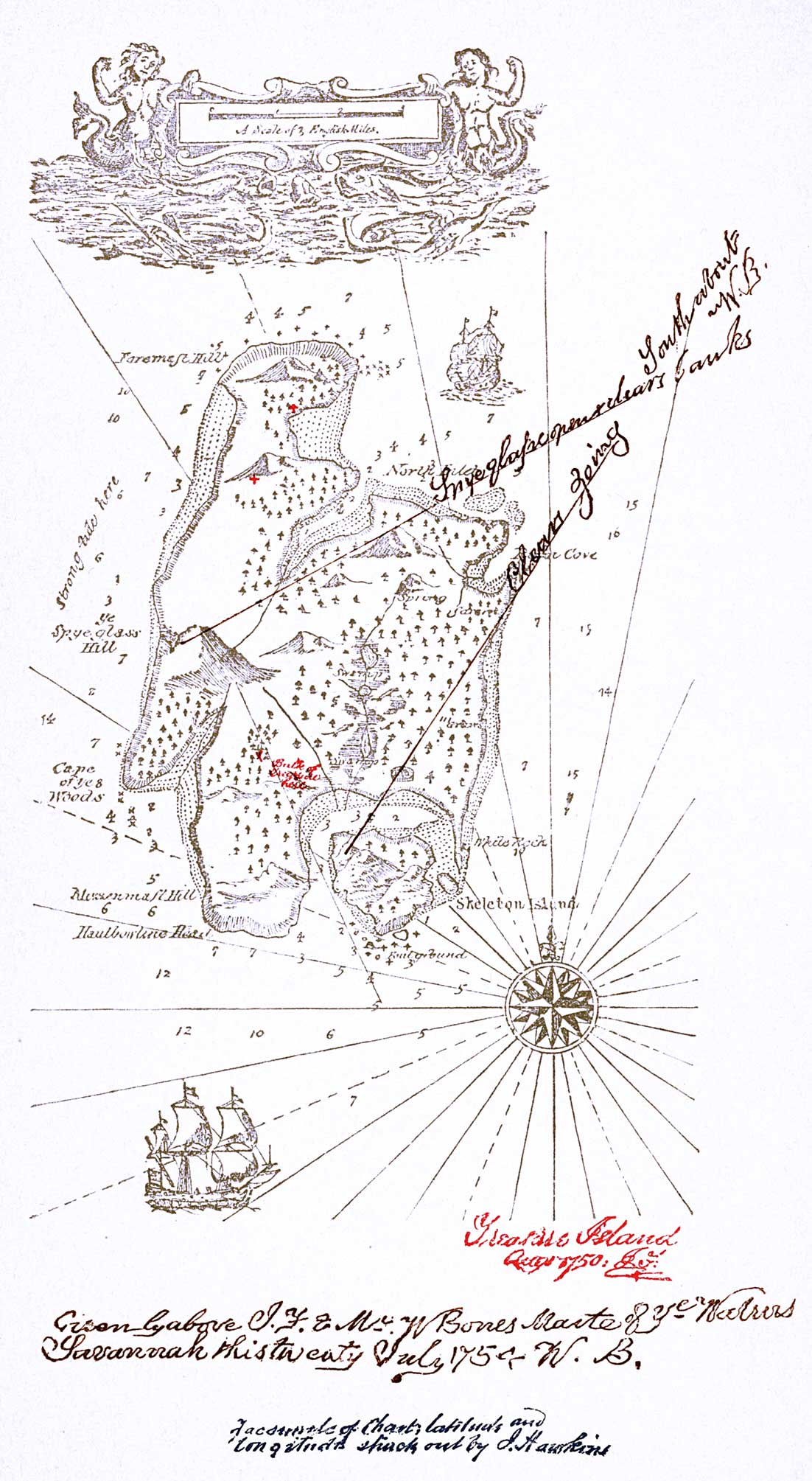
The origin of the map that inspired Treasure Island by Robert Louis Stevenson is rooted in a creative and somewhat accidental process. Stevenson drew the original map while he was working on the story, which he was crafting as a boy’s adventure novel. The map was a key part of his planning, and it served as the basis for much of the novel’s plot and action.
Stevenson’s stepson, Lloyd Osbourne, was involved in the creation of the map. The two of them were playing around with sketches, and Stevenson began to draw a map that depicted an island with a mysterious layout, complete with various features like the “Spy-glass Hill” and “Skeleton Island.” This map captivated Stevenson so much that it inspired the story itself, shaping the novel’s setting and events.
Unfortunately, the original map was lost when the manuscript was sent to the publishers, forcing Stevenson to recreate it from memory. The recreated map is the one that was eventually published with the book, but it was slightly different from the original.
The concept of treasure maps with “X marks the spot” became iconic largely because of Treasure Island, influencing countless adventure stories and the popular imagination regarding pirate lore.
A Note on the Typography
DTL Fleischman, a revival of the work of 18th-century Dutch punchcutter Johann Michael Fleischman, exudes a spirited, baroque elegance with its sharp contrasts, dynamic curves, and distinctive serifs. For Treasure Island, this typeface evokes the adventurous and historic tone of Robert Louis Stevenson’s classic tale. Its lively, almost swashbuckling energy mirrors the high-seas escapades and the vivid, larger-than-life characters of the novel. The robust strokes and intricate details of DTL Fleischman align with the rich, evocative atmosphere of the story, capturing both its historical setting and its thrilling sense of discovery.
Artist Edition
Pre-orderThe Artist edition is limited to 500 copies and is designed as a tribute to the 1911 edition. It is a full cloth hand binding with an offset printed reproduction of the original cover art tipped-on and set into a debossed frame. Endsheets are illustrated and the edition is housed in a cloth covered slipcase with end caps in gold-colored cloth which complements the foil blocking on the spine. It is printed letterpress on Cougar Natural with all illustrations printed giclée on Hahnemühle Bugra which are hand tipped. The edition is signed by Sir Andrew Motion.
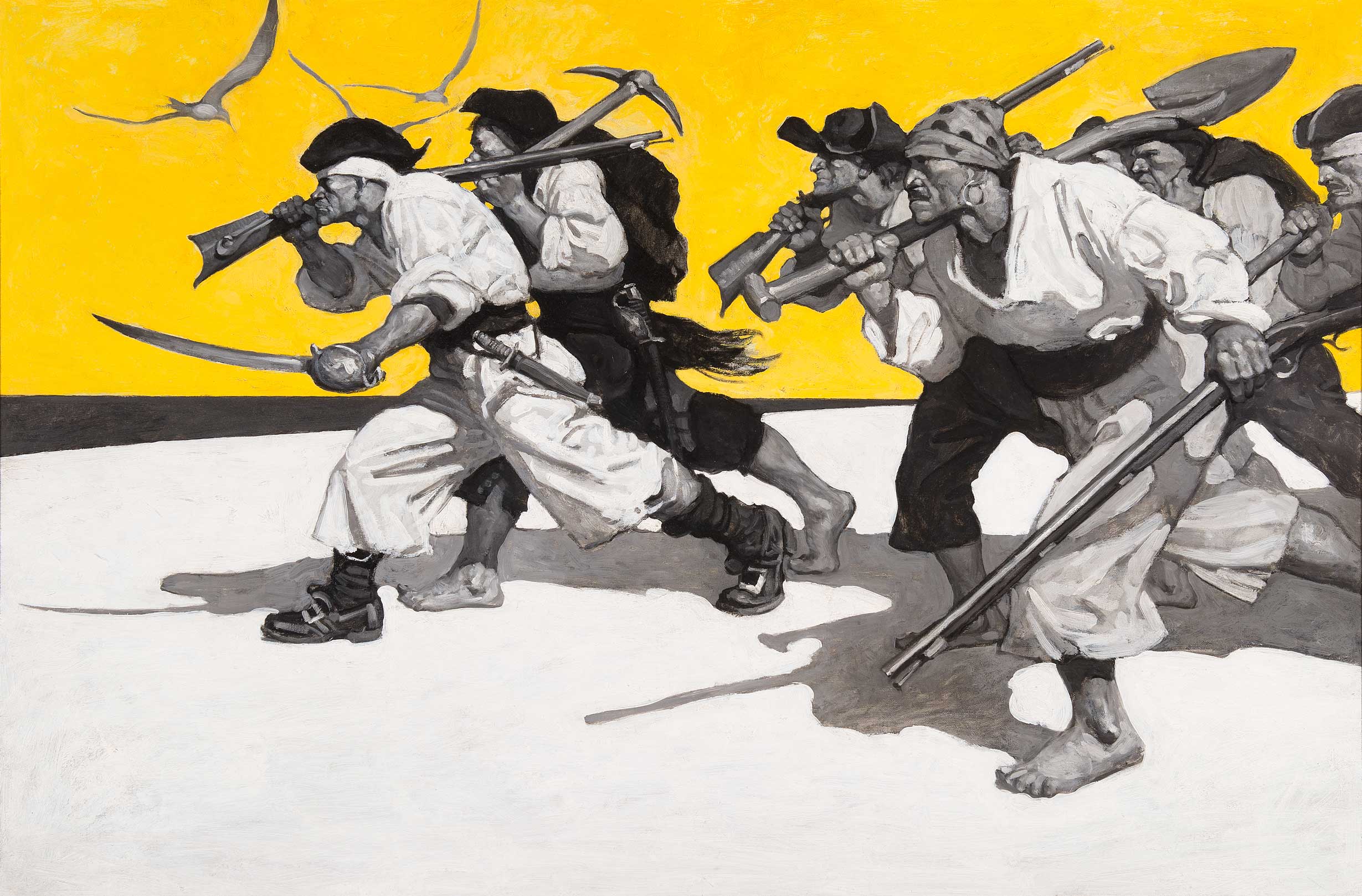
Numbered Edition
Pre-orderThe Numbered edition of 250 copies is a handbound full leather binding. The design pays homage to Robert Louis Stevenson’s original treasure map, elegantly reinterpreted in gold foil blocking from a brass plate. A custom designed ornamental compass motif radiates outward, its guiding lines evoking the spirit of adventure and discovery that defines Treasure Island. A ship drifts toward the island, symbolized by a richly blocked leather label, where the title is beautifully stamped.
Endsheets are Hahnemühle Bugra and head & tail bands are handmade with leather. The edition is housed in a clamshell enclosure covered in European cloth with velour lined trays, and is printed letterpress on Neenah Cotton paper with all illustrations printed giclée on Hahnemühle Bugra which are tipped-on. The edition is signed by Sir Andrew Motion.
Lettered Edition
Pre-orderThe Lettered edition is limited to 26 copies and is a full goatskin binding inspired by the Vellucent bindings of the late 19th and early 20th centuries. The technique was developed by Cedric Chivers around 1903. A vellum print of the Captain Bill Bones painting is inlaid beneath the topmost cover board, which is precisely die-cut to frame and reveal the illustration, creating a striking depth and layered visual effect. The artwork is silkscreened onto the finest calfskin vellum, crafted by world-renowned parchment makers, William Cowley. Established in 1870 and spanning four generations, William Cowley has upheld a legacy of excellence, producing vellum of unparalleled quality, durability, and beauty. The print features a protective, UV resistant print-guard treatment.
Printing on vellum produces a soft, muted effect, where the artwork appears aged and gently faded, as if imbued with time. Colors appear subtly subdued, and details are softened by the organic surface. The slightly ghosted, timeworn appearance harmonizes beautifully with this style of binding, evoking the old-world charm and timeless craftsmanship of early 20th-century fine editions.
The cover features gold foil blocking from a brass plate as well as a leather spine label. Head & tail bands are handmade with leather and endsheets are Suminagashi marbled paper. Suminagashi is the ancient Japanese art of paper marbling. The name “suminagashi,” meaning “floating ink,” evokes the movement of water and swirling tides—an ideal metaphor for the tumultuous seas and hidden treasures central to the novel’s narrative. The organic, flowing patterns created through this process can resemble ocean currents, stormy skies, or even topographical maps of uncharted islands, lending each sheet of marbled paper a unique and adventurous character.
The marbled papers are created by artist, educator and designer Natalie Stopka. Her abstract, organic prints are made using botanical dyes that she ethically forages or cultivates in her studio garden. The paper is Saint-Armand Old Masters which are handmade using traditional methods.
The edition is housed in a quarter leather clamshell enclosure with a rounded spine and European cloth with velour lined trays. The edition is printed letterpress on mouldmade Hahnemühle Biblio 150 gsm paper and is signed by Sir Andrew Motion.
Endsheet Illustration Giclée Print
We are pleased to offer a special limited run of giclée prints featuring N.C. Wyeth’s stunning endsheet illustration. Printed on 300 gsm acid-free cotton paper, each print measures 17” x 11¾” and captures the depth and detail of the original artwork. The print will not be numbered, with the final quantity determined by preorder demand.
Behind-The-Scenes Video – Suminagashi Marbled Paper
About the Collaborators

Sir Andrew Motion
Sir Andrew Motion was the UK Poet Laureate from 1999 to 2009 and is co-founder of the Poetry Archive and Poetry by Heart. He was knighted for his services to poetry in 2009. Motion’s most recent collections are New and Selected Poems 1977-2023 (2023), and Waders (2024). He has also written two volumes of autobiography, In the Blood (2006) and Sleeping on Islands (2023), biographies of Philip Larkin and John Keats, and a book of essays, Ways of Life. A devoted admirer of Robert Louis Stevenson, Sir Andrew Motion published an officially authorized sequel to Treasure Island in 2012, titled Silver: Return to Treasure Island.
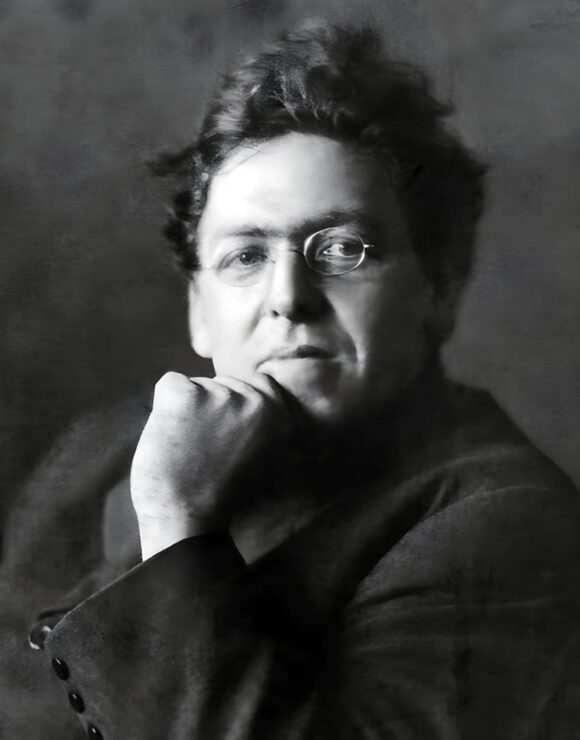
N.C. Wyeth
N.C. Wyeth (1882–1945) was an American illustrator and muralist. Wyeth was raised on a farm, and he learned drafting and illustration in Boston before studying with the master illustrator Howard Pyle. Wyeth first found success in depicting the American West. During his career he contributed his memorable illustrations to more than 100 books, including a famous series of children’s classics, including Treasure Island, Kidnapped, King Arthur, Robin Hood and The Black Arrow. He also produced numerous murals in public buildings.
Matching Numbers & Letters
A Matching Pre-Order email is sent to owners of our previous publication, Born of Man and Woman Collection at 9:00 A.M. PT on the day of announcement. If you did not receive the email, contact us here. If your order is not received before the deadline, your designated number or letter will be assigned to the new owner.
Order Limits
Please be aware of the order limits for our editions. You can read more about this in the Order Limits article on our support site.
Fourteen of Seventeen Illustrations by N.C. Wyeth
Illustrations shown here are low resolution. Reproductions in our edition are created from photographs of the original paintings captured using museum-grade reproduction techniques and produced as fine art giclée prints.
Published editions may differ slightly from mockups and prototype designs
*Payment Plan Options: Learn more here.

